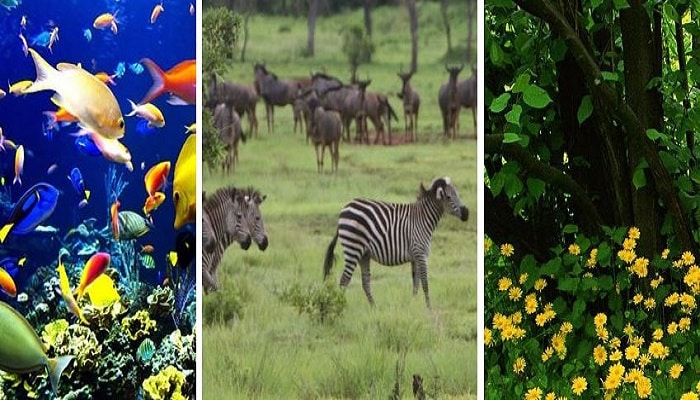We explain Biological Community Examples and characteristics. In nature there are complex connection networks between species, as well as different adaptation strategies that allow living organisms to guarantee their survival and evolution.
The term biological community is used within biology and, more specifically, in the world of ecology, to define the set of living organisms that live in a certain habitat . In a colloquial way we could affirm, thus, that the biological community includes the “catalog” of species that constitute a certain community of living individuals.
However, the concept of biological community is very complex, since the ecological relationships that exist between said individuals in the community must be taken into account , as well as the climatic and physical-chemical characteristics of the environment in which they inhabit. Therefore, there are other terms that are often used to refer to the same concept, such asthe ecological community or the biocenosis .
10 Biological Community Examples You Must Know
Now that we know what the characteristics and structure of biological communities are, in the following list we offer examples of biological communities , concrete examples of some of the most surprising and biodiverse on the planet, as well as the groups of living beings that constitute them:
- Intertidal biological communities:macroalgae, cyanobacteria, microalgae, diatoms, nematodes, meiofauna (small animals that live among the grains of sand on the coast).
- Coral reefs:bony and cartilaginous fish, reptiles and marine mammals, invertebrates, molluscs, anemones, algae, phytos and zooplankton.
- Mangroves:mangrove trees adapted to the permanent or seasonal presence of surface water; reptiles, arthropods, waterfowl. Discover more about What is a mangrove and its characteristics .
- Boreal forests: conifers and shrubs adapted to low temperatures and the presence of snow; small and large mammals with hibernation strategies, birds of prey.
- Tropical rainforests:evergreen trees, ferns, and vines adapted to humid climates; amphibians, reptiles, mammals, birds, insects, fungi and spoilage microorganisms. Learn more about the Flora and fauna of the tropical jungle in this other post.
- Savannahs:acacias and small scrubs adapted to arid climates; large carnivorous and herbivorous mammals, reptiles, carrion birds, poisonous invertebrates. Learn more about this type of biological communities and their biomes with these other articles on the Savannah Ecosystem: characteristics, flora and fauna and the Palm Savannah: characteristics, flora and fauna.
